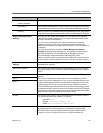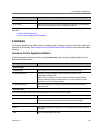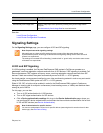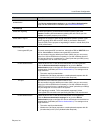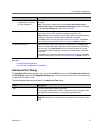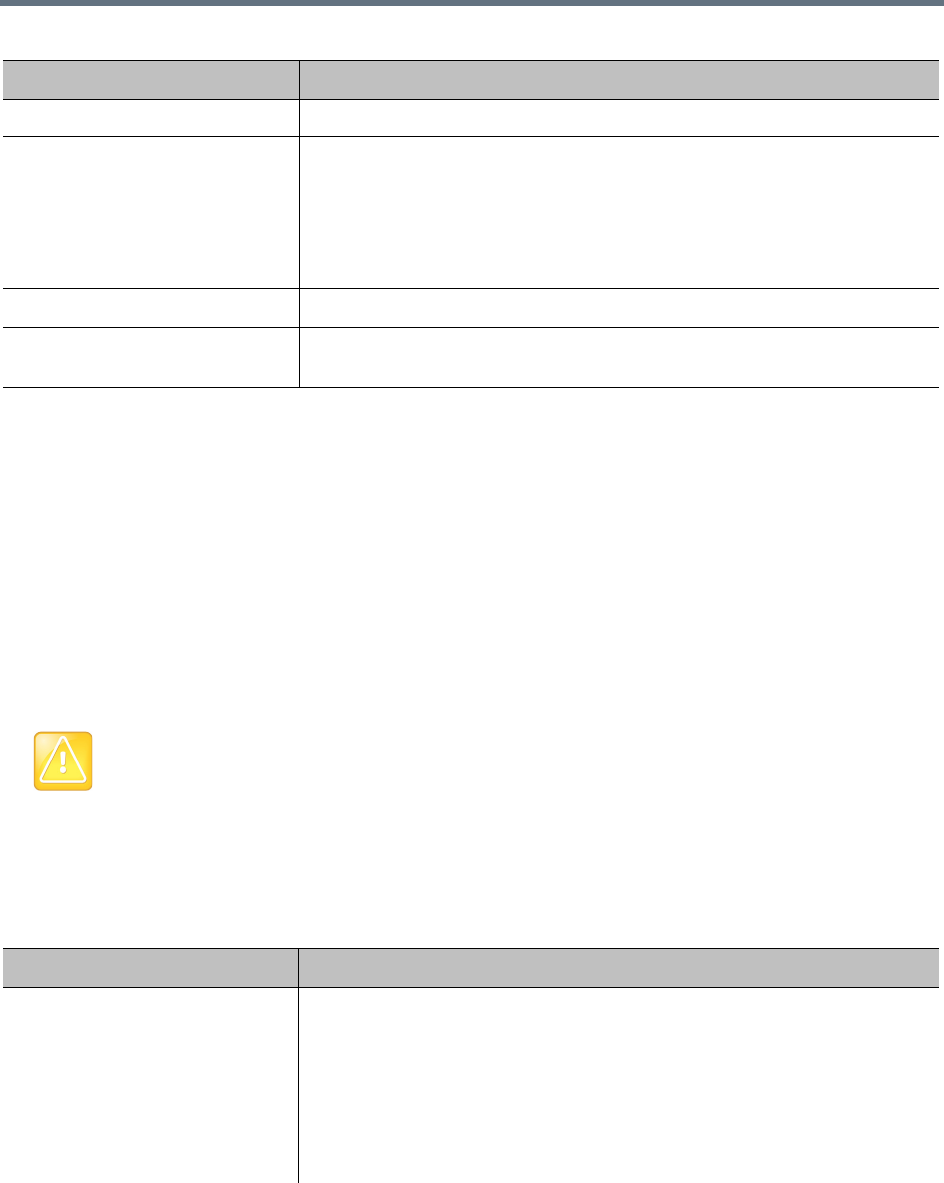
Local Cluster Configuration
Polycom, Inc. 67
When you add a routing rule, it appears in the table below the input fields. Select a rule and click Delete
selected route to delete it. Click Show raw routing configuration to display the operating system’s
underlying routing configuration.
See also:
Network Settings
Time Settings
The following table describes the fields on the Time Settings page. These values are normally set in the
USB Configuration Utility during system installation and rarely need to be changed. See the Getting Started
Guide.
Field Description
Host/Network The IP address of the destination network host or segment.
Prefix length The CIDR (Classless Inter-Domain Routing) prefix size value (the number of
leading 1 bits in the routing prefix mask). This value, together with the
Host/Network address, defines the subnet for this route.
For IPv4, a prefix length of 24 is equivalent to specifying a dotted-quad subnet
mask of 255.255.255.0. A prefix length of 16 is equivalent to specifying a
subnet mask of 255.255.0.0.
Interface In split network configuration, select the interface for this route.
Via IP address of router for this route. Optional, and only needed for non-default
routers.
Caution: Time settings changes require a restart
Changing time settings requires a system restart and terminates all active conferences.
You can’t change the system’s time settings while it’s integrated with a Polycom RealPresence
Resource Manager system or part of a supercluster. The integration must first be terminated or the
cluster removed from the supercluster. See RealPresence Resource Manager Integration or
Superclustering.
We strongly recommend specifying NTP servers.
Field Description
System time zone Time zone in which the system is located. We strongly recommend selecting
the time zone of a specific geographic location (such as America/Denver), not
one of the generic GMT offsets (such as GMT+07 POSIX).
If you really want to use a generic GMT offset (for instance, to prevent
automatic daylight saving time adjustments), note that they use the
Linux/Posix convention of specifying how many hours ahead of or behind
local time GMT is. Thus, the generic equivalent of America/Denver
(UTC-07:00) is GMT+07, not GMT-07.









